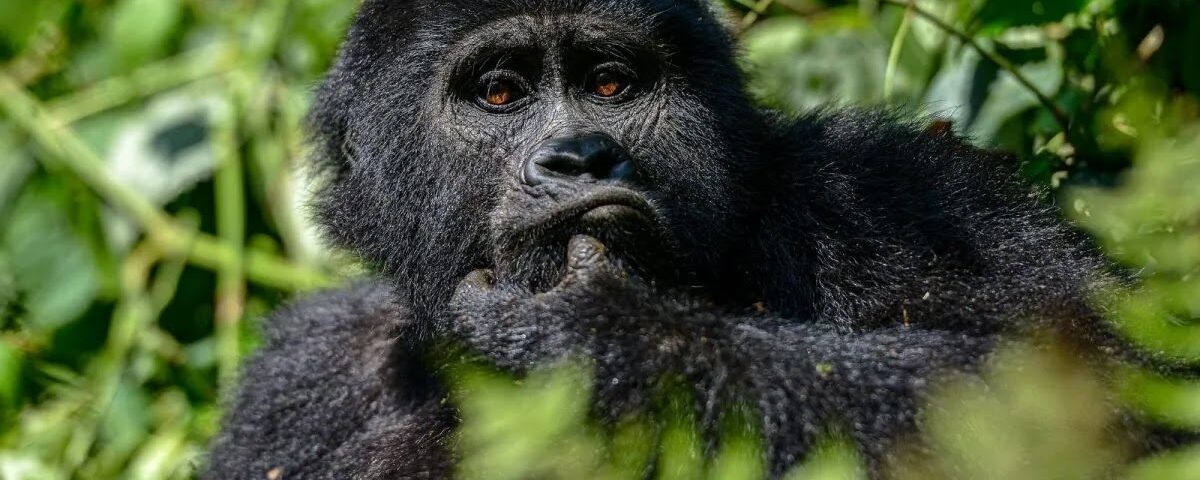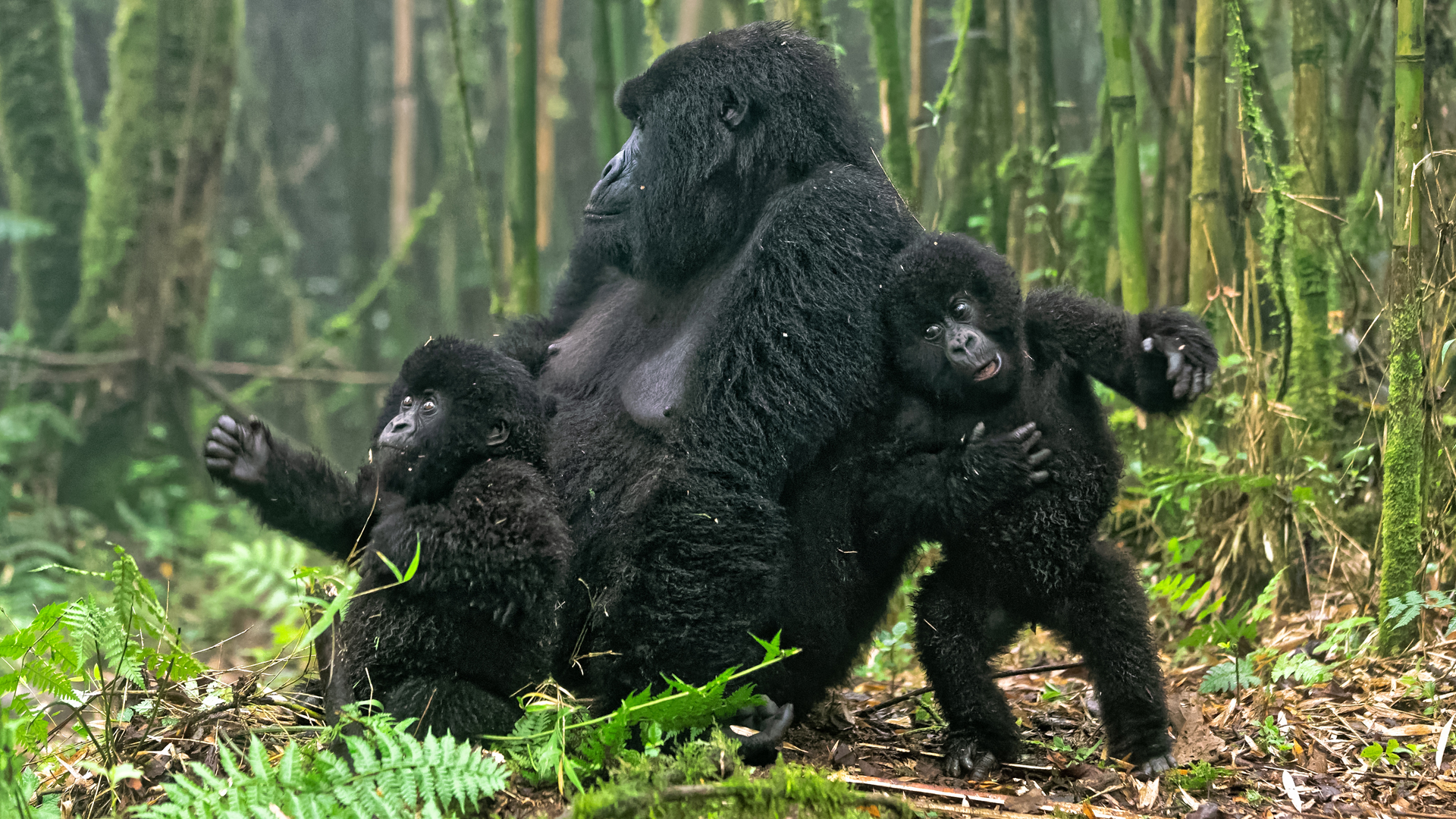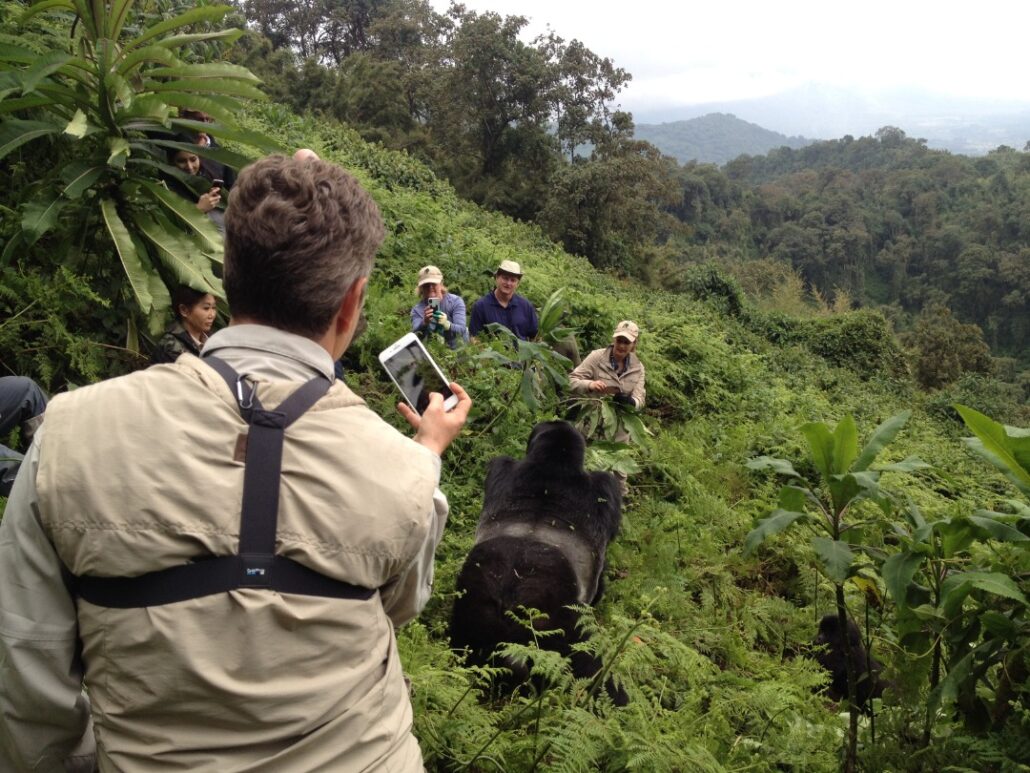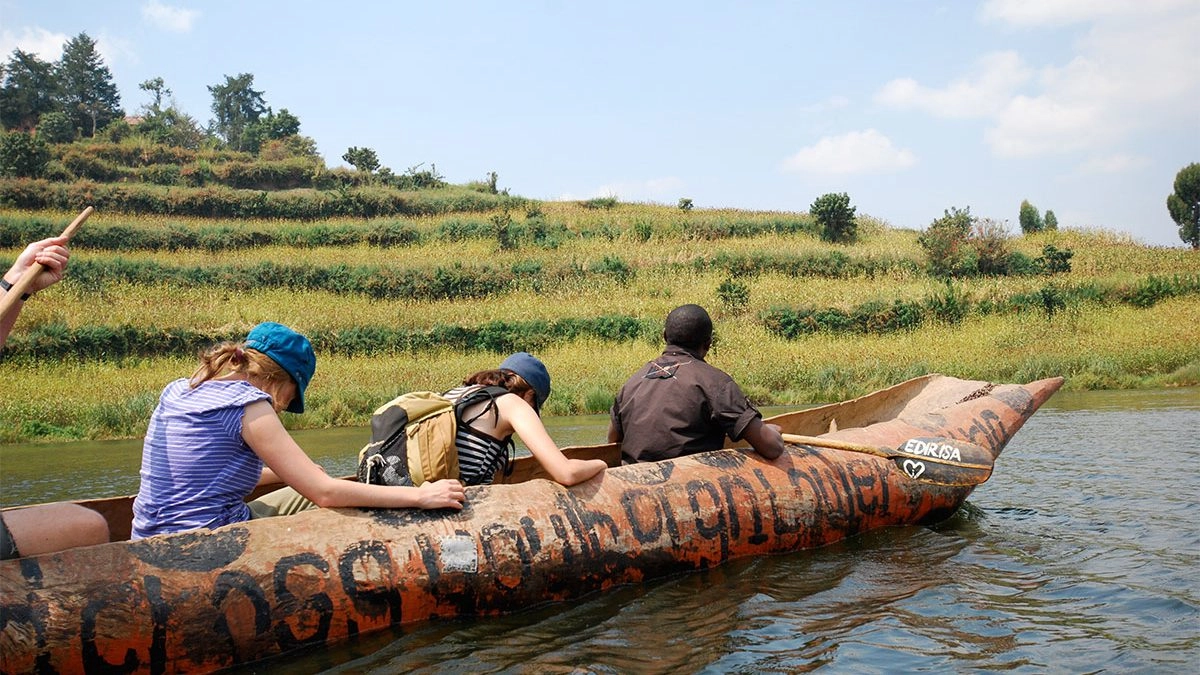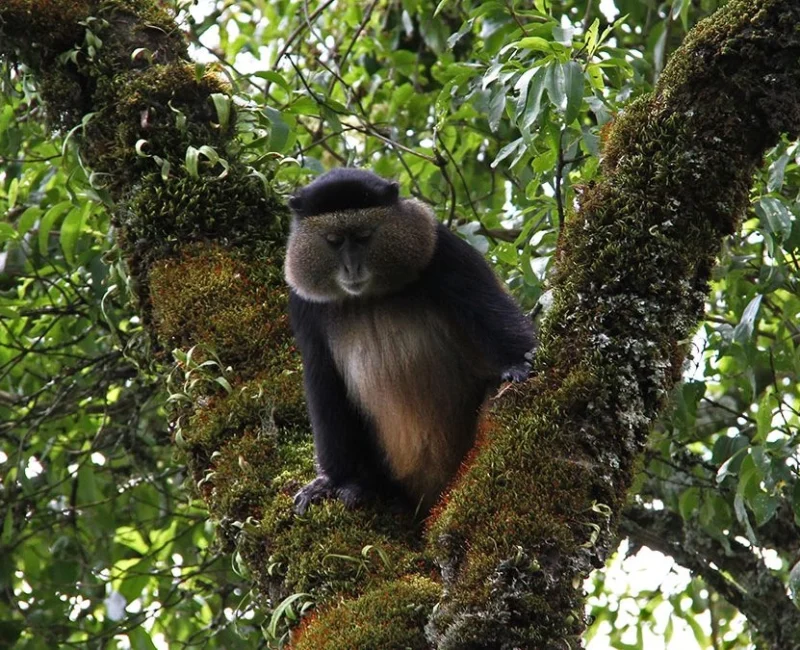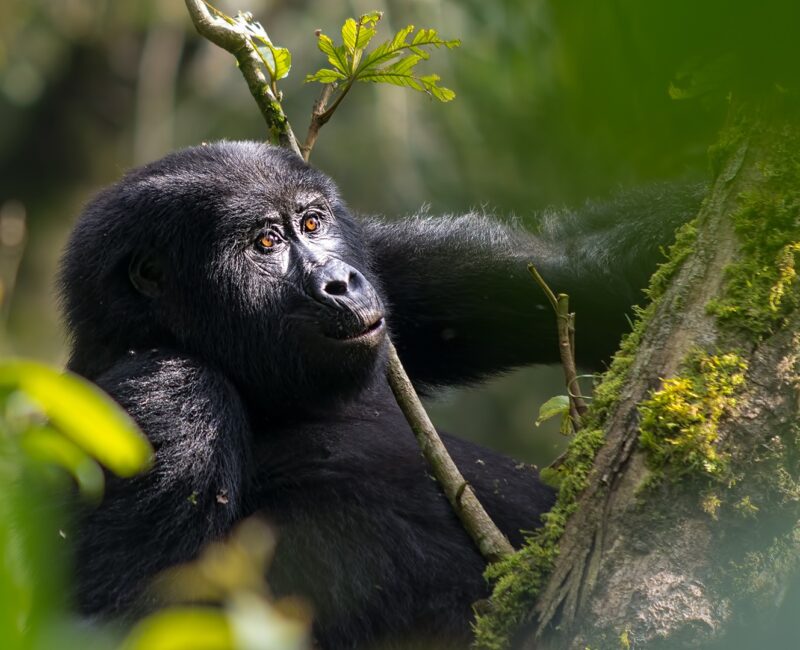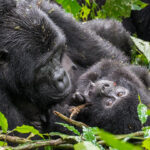
Gorilla Trekking vs Habituation in Uganda
September 23, 2025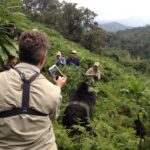
How to Prepare for Gorilla Trekking
September 23, 2025Understanding Gorilla Behavior During the Trekking Experience
Uganda is globally celebrated for its exceptional wildlife and immersive Gorilla Trekking opportunities. Among these experiences, understanding gorilla behavior during a trek enhances the safari, creating deeper connections with these majestic creatures. Bwindi Impenetrable National Park and Mgahinga Gorilla National Park host mountain gorillas in their natural habitats, allowing visitors to witness social dynamics, foraging habits, and family structures during Uganda Gorilla Safaris. Observing gorillas is a profound encounter, requiring respect, patience, and adherence to safety protocols to protect both the animals and visitors.
Gorilla trekking in Uganda forms the centerpiece of many Uganda Safari Holidays attracting wildlife enthusiasts, photographers and researchers. The experience is not only about observing gorillas but also about understanding the ecosystem in which they thrive. Forest trails, guided by professional rangers, take visitors through dense tropical habitats where gorillas forage, play, and interact with one another. Travelers often pair Uganda Gorilla Trekking with Uganda Wildlife Safaris and Uganda Wildlife Tours to experience a broader range of African wildlife, including chimpanzees, primates, and diverse bird species. Lodges near the trekking trails offer cultural immersion opportunities, further enriching the safari experience with local music, traditional dance, and community visits.
Observing Gorilla Social Behavior
During a Uganda Gorilla Trekking experience, visitors can observe the gorillas’ typical social interactions which reveal intricate family dynamics. Grooming is one of the most commonly observed behaviors, reflecting both hygiene practices and social bonding within the group. Monkeys and gorillas alike engage in this activity to strengthen relationships and reinforce hierarchical structures. Visitors may notice playful interactions between juveniles and adolescents, which help younger gorillas develop physical coordination and social skills.
Understanding social hierarchy is critical during gorilla observation. The dominant male, or silverback, leads the family, maintaining order and protecting members from potential threats. Other adults, sub-adults, and infants display varying behaviors based on their roles within the group. Observing these interactions provides travelers with insights into gorilla intelligence, cooperation, and communication. Questions such as, how do gorillas interact within their family units? become clearer when guided by expert rangers during Uganda Gorilla Safaris. These experiences also foster appreciation for conservation efforts that protect gorillas’ natural habitats and ensure their long-term survival.
Feeding Patterns and Foraging Behavior
Gorilla foraging offers an intimate glimpse into the ecological balance of Uganda’s rainforests. During Uganda Gorilla Trekking, visitors can observe gorillas selectively choosing leaves, stems, fruits, and occasionally insects. Their feeding habits reflect seasonal availability and individual dietary preferences, providing valuable insights into forest biodiversity. Rangers explain how gorillas’ foraging behavior supports seed dispersal, helping maintain the forest ecosystem for other wildlife and plant species.
Visitors often ask: what can be learned from watching gorillas feed? The answer lies in understanding their adaptability and intelligence. Gorillas demonstrate problem-solving skills when accessing food and display preferences that reveal cultural differences between gorilla groups. Extended observation during trekking or habituation experiences allows travelers to compare feeding strategies and identify unique behaviors. Incorporating these observations into broader Uganda Wildlife Tours enhances the safari, linking primate behavior to forest conservation and ecosystem management. Lodges near trekking trails often offer educational workshops about gorilla diets and forest ecology, enriching the Uganda Safari Holiday experience.
Maintaining Safety and Respect During Gorilla Encounters
A successful Uganda Gorilla Safari requires strict adherence to safety and ethical guidelines. Visitors must maintain a 7-meter (21-foot) distance from gorillas to prevent disease transmission and minimize stress. Gorillas are highly susceptible to human-borne illnesses, making precautions such as wearing masks mandatory. Moving slowly, keeping voices low, and avoiding sudden movements ensures a calm environment for observation.
Guidelines emphasize that visitors must never initiate contact, make direct eye contact, or use flash photography. Each of these actions can agitate gorillas, potentially triggering aggressive or defensive responses. If a gorilla charges, travelers should crouch calmly and remain still, signaling that they are not a threat. Rangers provide guidance to maintain safe distances, ensuring that interactions remain respectful while allowing close observation. These rules are essential for preserving gorilla well-being and ensuring a safe experience for all participants during Uganda Wildlife Safaris and Uganda Safari Holidays.
One-Hour Limit and Ethical Considerations
Each trekking group is allowed one hour with the gorilla family, which may be shortened if the gorillas show signs of stress. Observing this time limit ensures the group remains calm and maintains natural behaviors. During habituation experiences, the duration may extend to four hours with smaller groups, offering a more immersive encounter while still prioritizing safety.
Ethical considerations extend to behavior and hygiene. Visitors must not eat or drink near gorillas and must wear masks to reduce the risk of transmitting respiratory illnesses. These practices highlight the importance of responsible tourism, allowing travelers to enjoy intimate encounters without compromising the animals’ health. Questions such as, how can tourists engage responsibly during gorilla trekking? emphasize the value of professional guides, adherence to rules, and understanding the gorillas’ natural behavior. Lodges near trekking trails reinforce these guidelines, offering workshops on wildlife ethics, conservation education, and local environmental initiatives.
Cultural Experiences Around Gorilla Trekking Lodges
While gorilla behavior remains the central focus of Uganda Gorilla Safaris, cultural engagement significantly enhances the safari experience. Lodges often provide access to local villages, where travelers can participate in traditional dances, music performances, and craft-making workshops. Visitors may also visit coffee or tea plantations, learning about sustainable agricultural practices and local livelihoods.
These activities complement wildlife observation by providing a holistic perspective on Uganda’s human and natural heritage. Tourists often ask, what cultural experiences can I enjoy alongside gorilla trekking? Participating in community activities allows travelers to connect meaningfully with local populations while supporting eco-tourism initiatives. Integrating cultural tours with gorilla trekking creates a multifaceted Uganda Safari Holiday, offering both educational enrichment and immersive, memorable experiences.
Combining Gorilla Trekking with Broader Wildlife Safaris
Gorilla trekking in Uganda is often combined with other wildlife experiences to create comprehensive safari itineraries. Uganda Wildlife Tours can include chimpanzee trekking in Kibale Forest, birdwatching in Mabamba Swamp, or game drives in Queen Elizabeth National Park. These multi-park adventures provide exposure to diverse habitats, species, and landscapes, enhancing the overall value of a Uganda Safari Holiday.
Combining trekking with other activities also allows travelers to compare behaviors, social structures, and environmental adaptations across species. For example, observing gorillas in Bwindi alongside chimpanzees in Kibale highlights differences in group dynamics, communication methods, and ecological interactions. Lodges strategically located near trekking and wildlife destinations facilitate easy access to multiple parks, providing guided tours, transportation, and cultural immersion. Such integration positions Uganda as a premier destination for global wildlife tourism, offering expert-led, authoritative, and unforgettable experiences.
Advanced Observational Techniques
To fully appreciate gorilla behavior, participants in Uganda Gorilla Trekking can employ advanced observational techniques. Maintaining a low profile, using binoculars, and noting subtle gestures or vocalizations enhances understanding of social interactions. Observing grooming sequences, play patterns, or feeding behaviors over time reveals the intricacies of gorilla societies.
Rangers often explain hierarchical relationships, territorial behavior, and conflict resolution among gorillas. These insights are valuable for travelers interested in ethology, conservation, or wildlife photography. Questions like, how do gorillas resolve disputes within their group? encourage participants to engage actively with the experience, deepening their connection to the animals and promoting responsible tourism. Incorporating these practices ensures that Uganda Gorilla Safaris deliver both entertainment and education, establishing your safari brand as a credible source of wildlife expertise.
Planning the Ultimate Uganda Gorilla Safari Holiday
Designing a Uganda Safari Holiday centered on gorilla trekking requires careful planning. Optimal itineraries integrate gorilla encounters with chimpanzee trekking, birdwatching, and cultural experiences. Lodges provide tailored packages, including meals, guides, transportation, and optional excursions. Questions such as, how can I maximize my safari experience while maintaining gorilla safety? are addressed through expert-led tours, small group sizes, and adherence to ethical guidelines.
Travelers benefit from combining multiple wildlife and cultural experiences, creating immersive itineraries that reflect Uganda’s biodiversity and heritage. Structured planning ensures safe, enjoyable encounters with gorillas while providing opportunities to explore surrounding ecosystems and communities. By prioritizing responsible tourism and understanding gorilla behavior, visitors enjoy enriched experiences that support conservation efforts and establish Uganda as a leader in global wildlife tourism.
Enhancing Your Gorilla Trekking Experience
Understanding gorilla behavior during the trekking experience in Uganda transforms a safari into an educational, immersive adventure. Observing grooming, play, social hierarchy, and feeding patterns provides insight into gorilla intelligence and family dynamics. Respecting safety protocols, maintaining distance, and following ethical guidelines ensures both gorilla well-being and visitor safety.
Integrating cultural experiences, multi-park wildlife tours, and lodge-based activities enhances the overall value of a Uganda Gorilla Safari. Whether for first-time travelers or seasoned wildlife enthusiasts, understanding gorilla behavior deepens appreciation, promotes conservation awareness, and creates memories that last a lifetime. Uganda stands as a premier destination for global safari audiences, offering expert-led, authoritative, and unforgettable Uganda Safari Holidays that combine wildlife observation, cultural immersion, and responsible tourism.

